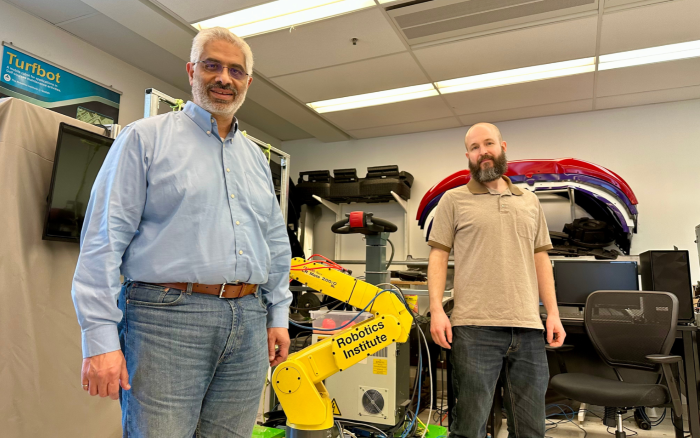When it comes to picking sun-warmed tomatoes, artificial intelligence is lending a hand.
A yellow-armed smart robot developed by the Guelph Intelligent Greenhouse Automation System, (GIGAS) at The Robotics Institute @ Guelph, harvests tomatoes using AI-powered vision and an innovative gripping system.
Developed at the University of Guelph’s School of Engineering, the smart robot examines plants with embedded cameras, tilting its head as if “thinking” with its machine vision algorithm. It grabs the tomato with finger-like grippers and sets the product perfectly into a bin.
Over 10 years, more than 20 students have worked on GIGAS. Recently graduated master’s students have just honed its innovative gripping system.
“I would say U of G is ahead in smart robotics for greenhouses and harvesting,” said project lead Dr. Moussa said in a University of Guelph news release.
“We started this project in 2010. Now we’re ahead of other universities and even industry. This is a very challenging problem and you’d be hard pressed to find a robot that’s actually being sold for this application.”
The U of G-developed technology was recently showcased to Ontario Premier Doug Ford and Ontario Minister of Colleges and Universities Jill Dunlop.
A recent report from the Canadian Agriculture Human Resource Council predicts one-third of the agricultural workforce will retire by 2030, leaving more than 100,000 jobs to be filled.
According to the report, innovative technology could be a crucial solution to tackling the chronic labour shortage.
“No other research lab that we know of is working on robotics for beefsteak tomatoes, which are generally the most difficult to work with,” said research associate Cole Tarry in the release.
“The robots closest to commercialization work with cherry tomatoes or cucumbers.”
Other applications to the technology are also being developed in the lab, including the possibility of harvesting other vegetables such as peppers and cucumbers.
GIGAS is also researching AI in the detection of plant diseases.
Catching early signs of disease could reduce the cost of treatment and the amount of chemicals used, ultimately saving other produce from diseases that can spread and destroy crops.
In the future, GIGAS could also be used within the manufacturing industry, helping to identify various hard-to-see manufacturing defects or to enable robotics to pick and place solutions for fragile and irregular parts.
Next, Moussa and his team hope to bring GIGAS into greenhouses for long-term field testing. There, they can collect the critical data needed to strengthen the robot’s AI learning, bringing it a step closer to commercialization.
“Humans take four to five seconds to harvest a tomato, whereas GIGAS currently takes 15 seconds,” Tarry said. “We’re hoping to cut that down to eight seconds. Assuming robots can work longer hours and you could have multiple robots, that could be game-changing.”

.png;w=120;h=80;mode=crop)

